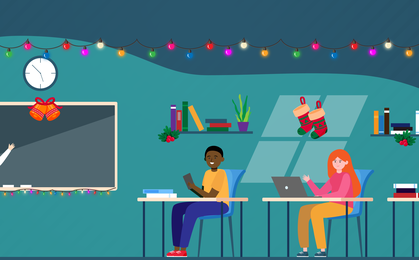Stay connected to the latest insights and innovations in education, and find out what’s top of mind with today’s most respected thought leaders.

Now that Achieve3000 is part of the McGraw Hill learning family, we’ve joined the McGraw Hill social media channels as well.

It’s the time of year when schools and districts start planning for summer instruction. In addition to covering areas students struggled with this year, many educators are also working to overcome learning deficits from previous years. Fortunately, Summer School provides us with a great opportunity to support and nurture student growth.

Preparing teachers to use research-based strategies in their classrooms will help ensure all of the hard work of planning EL programs will have the desired results for students.

Now more than ever, districts need to support the social and emotional needs of their students. Educators can do three simple things to support the social and emotional well-being of their students: support students needs for autonomy, belongingness, and competence. These three basic psychological needs are the focus of self-determination theory (SDT), the leading modern theory about well-being and motivation, built on many years of research.

My student lived a life where things like electricity and running water weren’t a guarantee. The hot meals he received as he sat by friends in the security of the school cafeteria were something his home life did not offer. Although loved, he knew the next two weeks of his life would be rough, and he wanted a holiday full of good things. To him, that meant being at school.

This fear of learning loss has prompted educators to seek immediate solutions. Many districts are developing elaborate models to address learning loss by focusing on structural changes including extended school year, extended school periods and days; and instructional solutions such as prioritizing key standards and reteaching standards previously taught from the grade below. Schools are using district and commercial products to assess student achievement, however in some cases, the frequent monitoring is creating a deficit mindset about students. Education companies and professional organizations are rushing to provide professional development academies and resources for teachers to address these deficits.
Our research team put together a Frequently Asked Questions document to help our customers understand exactly what the Goal Tracker is and does. The first question on that document is What is the Goal Tracker. They answered that question with a simple statement: The Goal Tracker provides information to help track students monthly progress towards proficiency targets on the state assessment test. While that statement is accurate, the Goal Tracker does so much more.

While there’s a huge body of research’referred to as ‘the science of reading’s that can guide educators on how to teach literacy effectively and improve outcomes, many educators aren’t aware of it, nor can they easily access it. In this article, I’ll share with you five steps you can take to improve literacy outcomes for your students, guided by the science of reading.

Some reading intervention programs limit exposure to complex text for young readers, and may be restricting students’ access to sophisticated vocabulary, grammar, and sentence construction, a problem schools try to mitigate through direct instruction of vocabulary lists and grammar rules. We end up teaching things disconnected from any context, which leads students and the adults they grow into to ask questions like? Why does grammar matter?